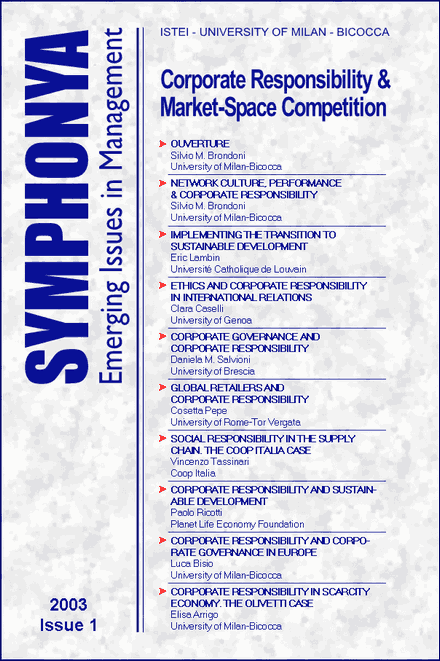Implementing the Transition to Sustainable Development
DOI:
https://doi.org/10.4468/2003.1.03lambinKeywords:
Economic Development, Sustainable Development, Environment Changes, Market Policies, Natural Resources Management, NegativeAbstract
From 1890 to 1990, the world population increased four times over while consumption of industrial products grew 40 times, energy consumption 16, water consumption 9 and the total size of the economy 14 times. Thanks to his creativity, man has the power to innovate and adapt his technologies, socio-political institutions and attitude towards respect for Nature in order to alleviate pressure on the environment. Markets in general do not take into account the value of many goods and services which are provided by Nature (such as the pollination of plants by insects, the regulation of floods by vegetation cover, the decomposition, by bacteria, of waste and toxic waste released into the water and soil, or the aesthetic value of the landscape) The successful transition to sustainable development requires the combination of sound information on the state of the environment, motivation turned into action and capacity to do so.
Downloads
Published
How to Cite
Issue
Section
License
The authors retain all rights to the original work without any restrictions.
License for Published Contents

You are free to copy, distribute and transmit the work, and to adapt the work. You must attribute the work in the manner specified by the author or licensor (but not in any way that suggests that they endorse you or your use of the work).
License for Metadata

Symphonya published articles metadata are dedicated to the public domain by waiving all publisher's rights to the work worldwide under copyright law, including all related and neighboring rights, to the extent allowed by law.
You can copy, modify, distribute and perform the work, even for commercial purposes, all without asking permission.



